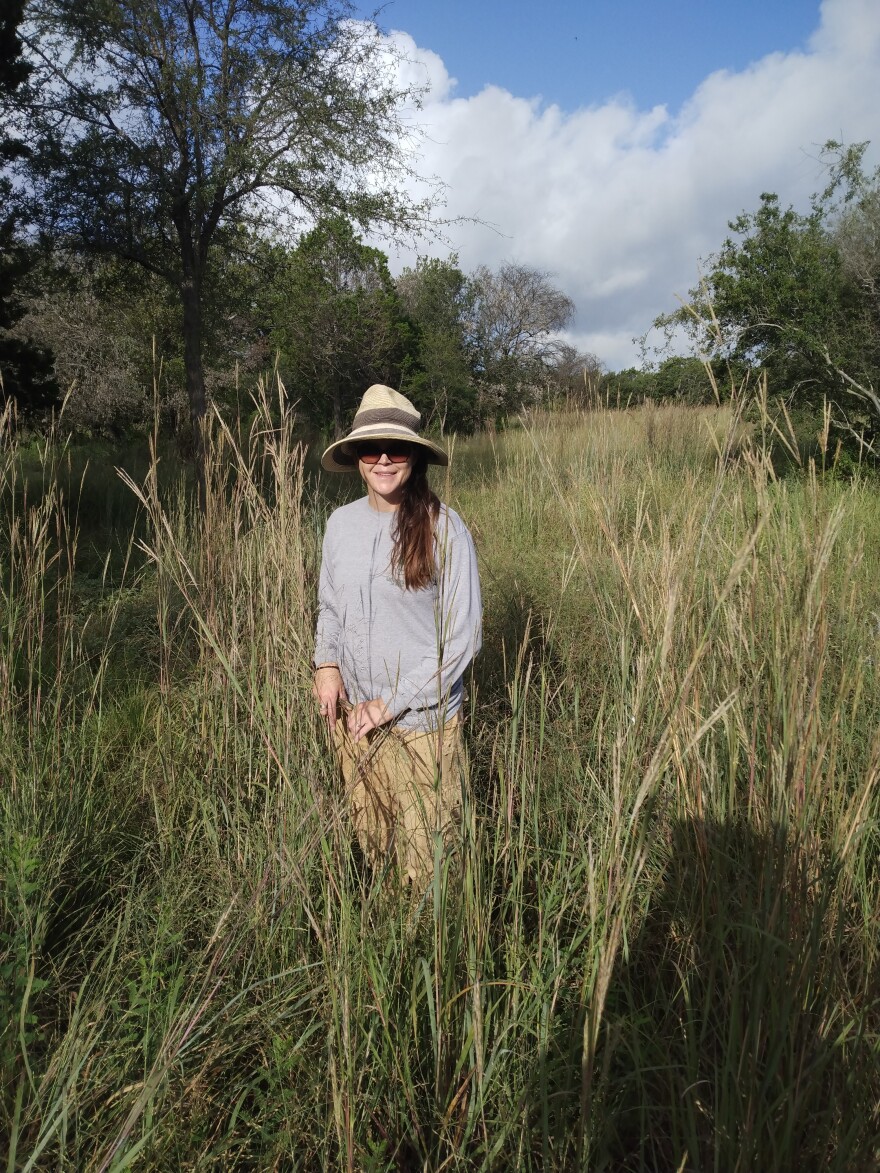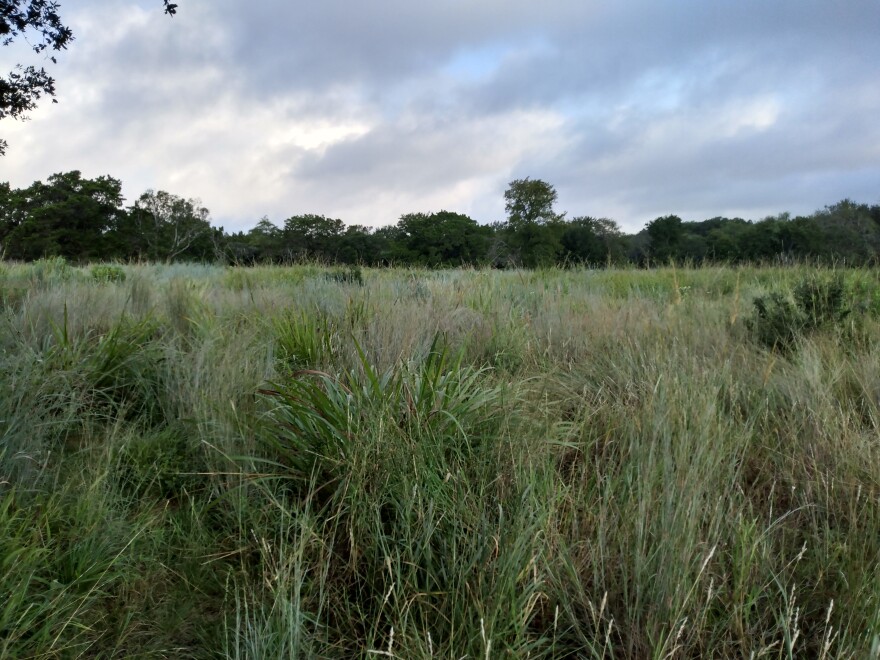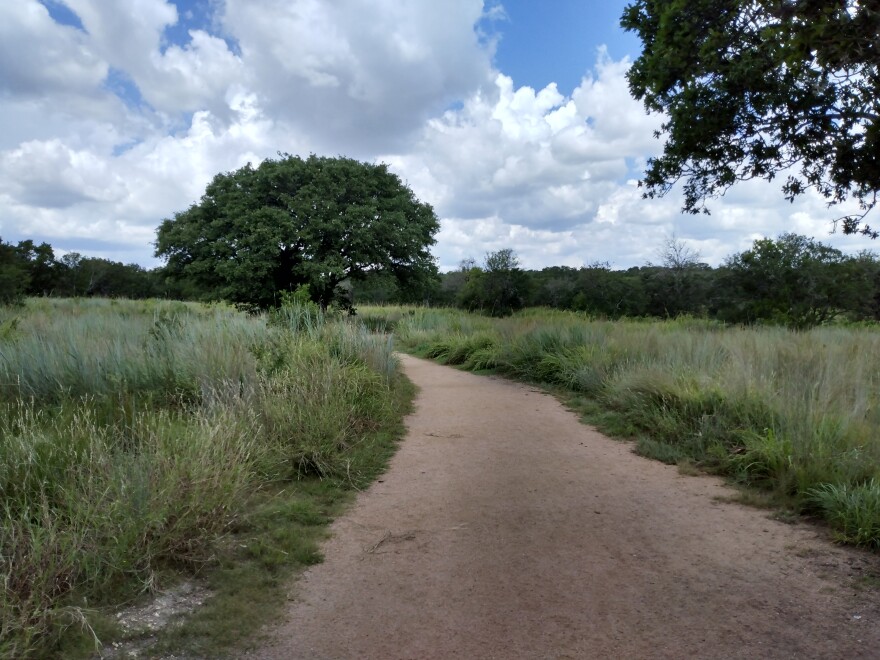More than a century ago people in Texas could stand outside and be dwarfed by prairie grasses — about 7 to 8 feet overhead. Thanks to expanses of corn and cotton fields — and the introduction of domestic grazers that found these grasses delicious — so much of that original grassland ecosystem has disappeared.
Less than 1% of native prairie still exists in North America according to the Native Prairies Association of Texas. However, there is a place in San Antonio where you can still experience such grasslands in their wild state — Hardberger Park.
Visiting this 13 acre plot on the Northwest Military side of the park is like going on a South Texas safari. Butterflies and bumblebees alight flowers. Birds sing. Deer graze. Hawks perch. And of course, homo sapiens make their way to the park’s one-of-a-kind landbridge.
This grassland has not stayed this way in perpetuity. It was once a part of the Voelcker Dairy Farm where constant cattle grazing changed it to a shrubby woodland. It had to be restored back to its native state.
Wendy Leonard is a Nature Preserve Officer for San Antonio Parks and has been with the restoration project since its beginning in 2009. The specific term she uses for the plot is a “savanna,” which she says denotes a “mosaic of grass, woody shrubs, and trees.”

Mosaic is an appropriate descriptor. There is a variety of green hues — the teal of indiangrass to the rust of bluestem. A mixture of statures — the shoots of gamagrass to the spread of bristlegrass. And an assembly of seed heads — the fireworks of switchgrass to the cotton candy of beardgrass.
The process to create this work of natural art occurred in three separate phases. Leonard explains that each one had a distinct propagation strategy — either planted, seeded, or some combination of the two. Such variables, she says, have allowed them to use the savanna as a sort of experiment for figuring out sound restoration practices. Pay close attention and “you can see differences between those three phases,” she said. This is best observed from the gravel walking paths that act as de facto dividing lines between each phase.
For instance, phase one is dominated by spindly stands of big bluestem. Back in 2009, more than 400 volunteers gave this section a starting nudge by planting a total of 50,000 native grasses in just one short workday. In contrast, phase two appears much denser due to the dominance of eastern gamagrass, an increasingly rare relative of corn that grows above 7 feet in the park. The last section is full of frost weed. It is so named because it exudes spines of ice when the temperature goes below freezing.
As with any environmental restoration project, patience has been key. Leonard explains one of the more picturesque problems they had to deal with. After distributing both grass and wildflower seed in the beginning, “there was a year or two where it was mostly wildflowers, which was beautiful, and we thought, what happened to all these grasses that we planted. Then after a few years, the grasses shot up and now we have mostly grasses.”
Reviving native vegetation brought certain animals with it. They have witnessed the return of several bird species “that we hadn’t seen before the restoration project”, she says. For instance, “we had a huge increase of native winter sparrows” and the arrival of the breathtakingly colorful vermillion flycatcher and painted bunting.
But perhaps the animal species to benefit most from this restoration is human beings.
“We always wanted Hardberger Park to be a kind of laboratory,” Leonard said.
To that end, they have teamed up with classes from the University of Texas-San Antonio, Trinity University and local high schools to participate in research here since “we still have a lot more questions that we could answer” about grassland restoration.
Collaboration doesn’t end there. Volunteers have continually helped to maintain this savanna, mostly by extracting exotic weeds and encroaching woody species. Some of the original 400 volunteers even “come back to the park today and tell me time and time again how they helped build the savanna,” Leonard said.
But most of all, it’s the general public of San Antonio, Leonards claims, that benefits from this rare natural resource.
“When people come out here, they have a unique opportunity to connect with something that exists mostly as a relic. Here, they can take time out from their normal lives, walk out onto the prairie, and really take in nature. That’s one of the biggest services this restored grassland provides for the residents of this city,” she said.
As if on cue, a red shouldered hawk sends its characteristic shriek into the sky while she says this. At the risk of anthropomorphizing, it appears to agree. Or maybe it’s just hungry. Either way, people can visit the towering grasses of Hardberger Park to hear it for themselves.






